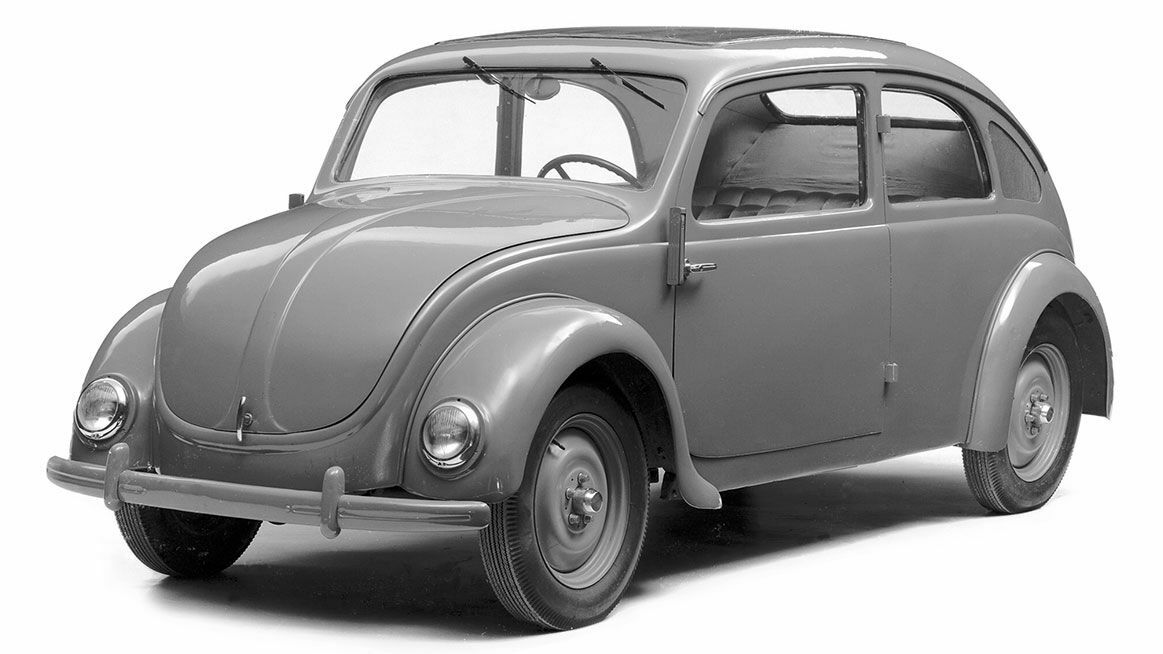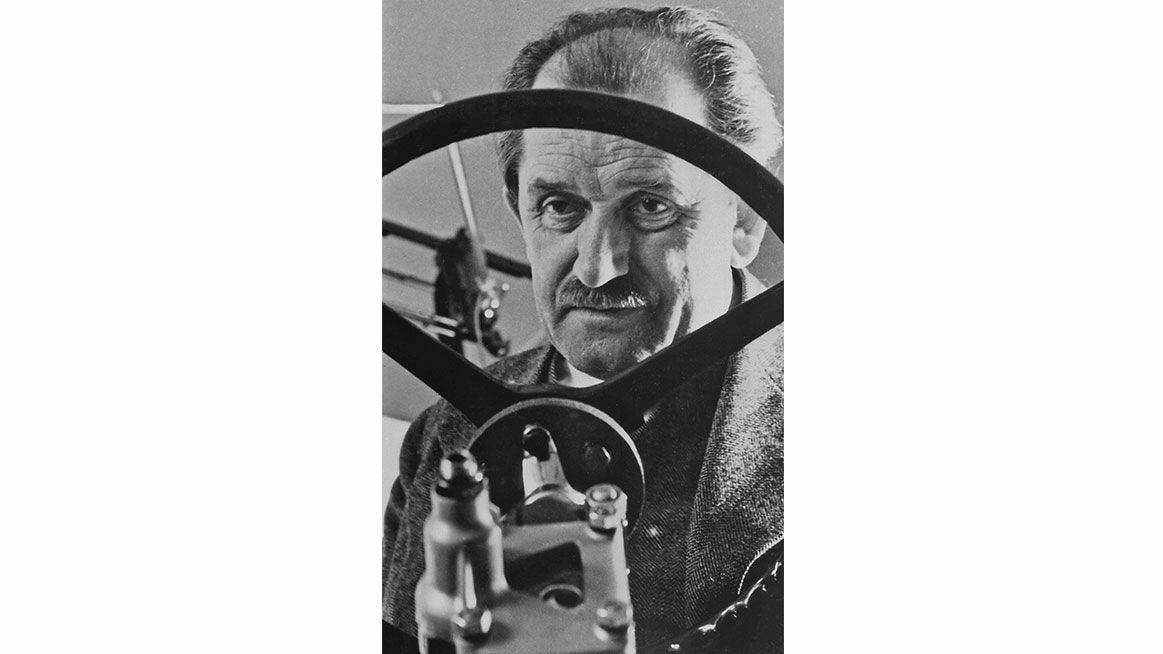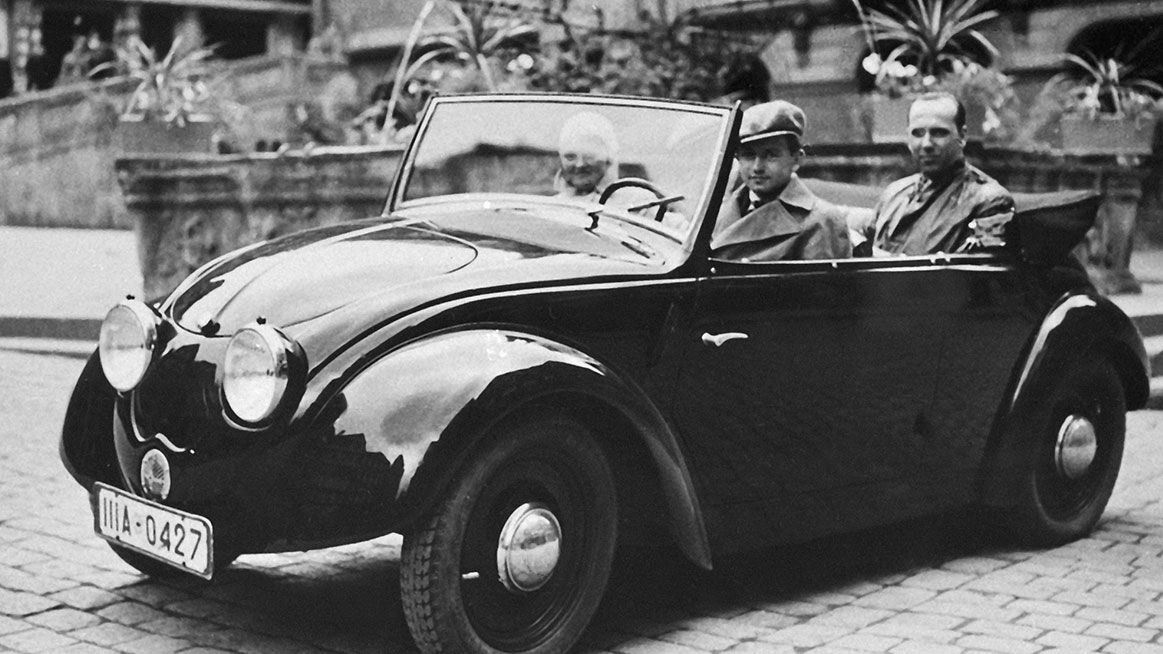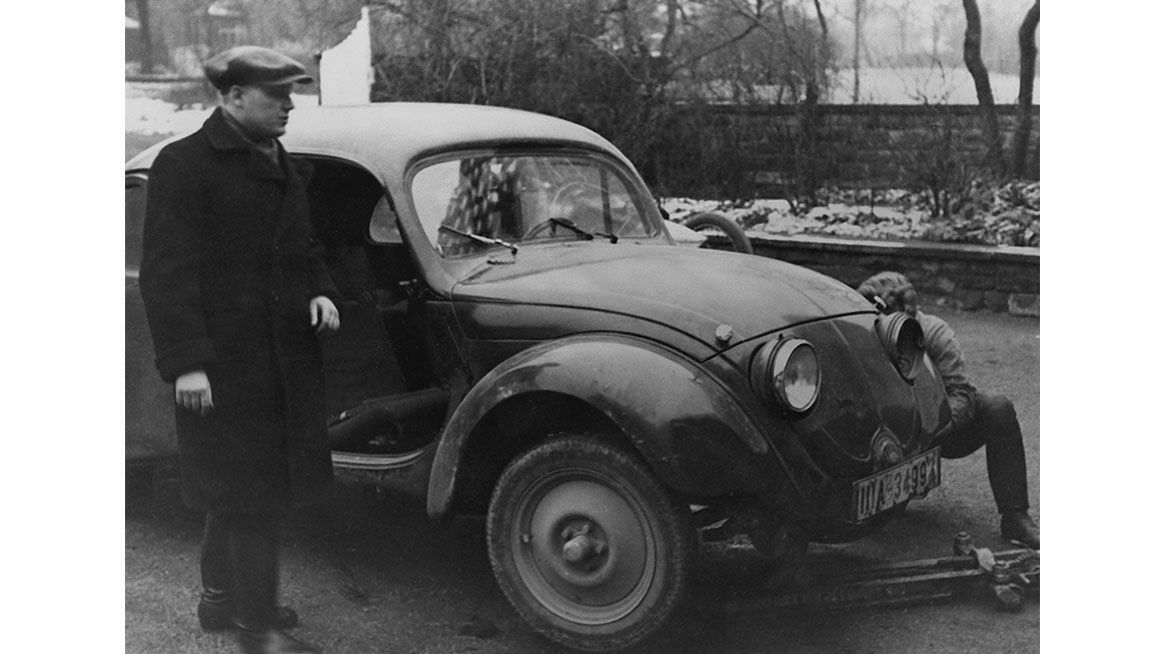“People’s car” by Ford, 1934
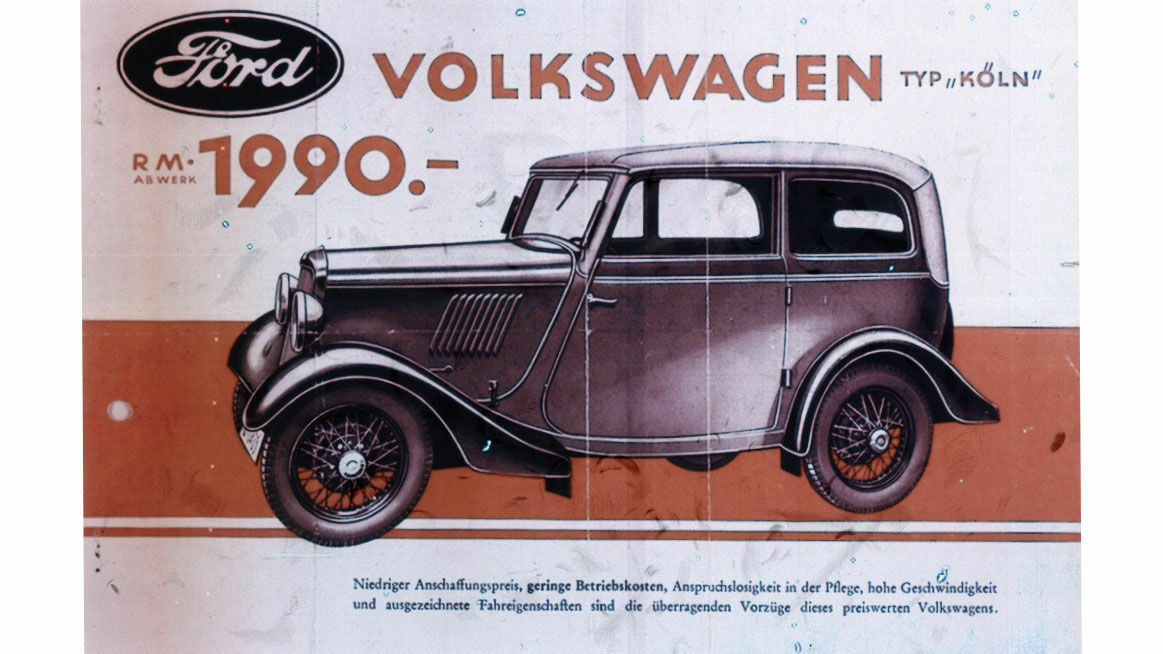
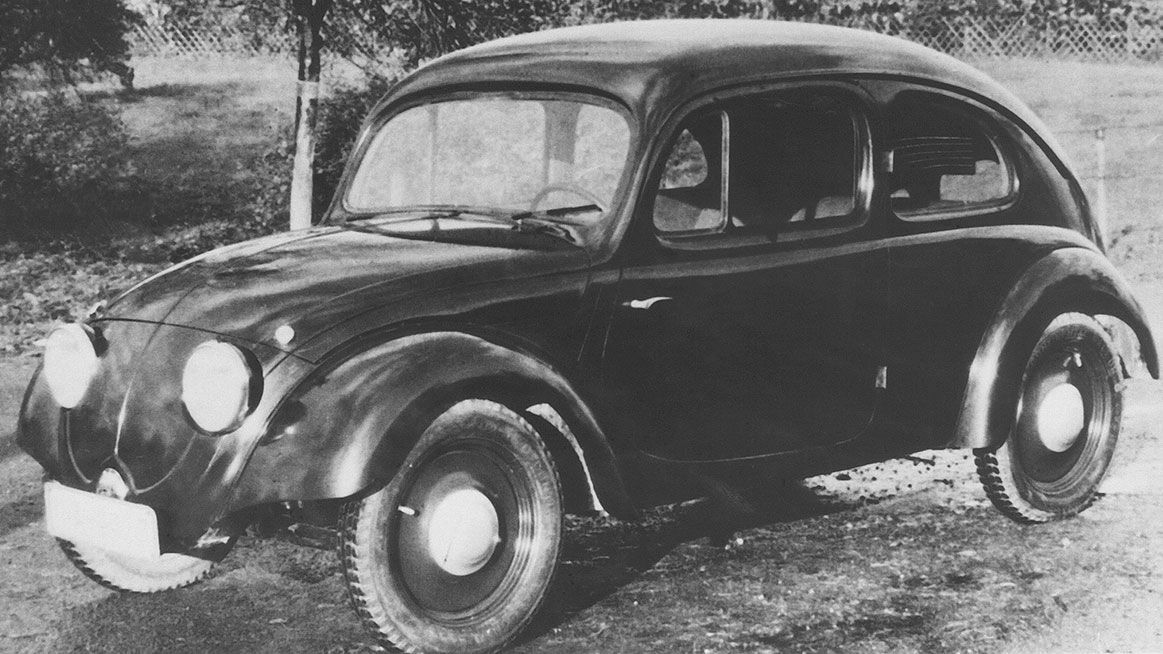
The introduction of tax breaks and the promotion of motorsport in 1933 regenerated the automobile market. The end of the global financial crisis was in sight. Car-makers and designers such as Ferdinand Porsche hoped that the burgeoning recovery would entail a fundamental shift towards mass motoring. On January 17, 1934, Ferdinand Porsche submitted to the Reich Ministry of Transport a “Memorandum on the construction of a German People’s Car”, setting forth a “fully practical vehicle” for four adults, “of normal size but relatively light weight”, with a cruising speed suitable for the recently built autobahn network of 100 kilometres per hour. Thanks to his technical repute, boosted by the many motorsport victories of his Silberpfeil (Silver Arrow) design, Porsche’s idea was taken up by Adolf Hitler.
Car companies including Opel, Ford, Adler, Stoewer, and also Ludwigsburg-based Standard Fahrzeugfabrik, with its “Superior” model, presented versions of a “German People’s Car” at the International Automobile and Motorcycle Exhibition in Berlin in March 1934. Disregarding all of those, in his opening speech on March 7, 1934, Hitler himself spoke out in favour of building a “low-cost car” which would bring the German automotive industry “millions of new buyers”. Public pronouncements mentioned a selling price of 990 Reichsmarks.
This placed the ball firmly in the court of the Reich Automotive Industry Association (RDA), which in May 1934 decided to develop a “German People’s Car” as a “communal project” among the private automotive industry. The industry association signed a contract on June 22, 1934 commissioning Ferdinand Porsche’s office to handle the engineering design. There were grave doubts among the car companies as to the economic viability of the project in view of the 990 Reichsmarks target price. Including an independent designer in the process meant that they could outsource the unresolved technical issues to an external party, who was contracted to develop a prototype within one year.
The Porsche KG company went to work at its factory in Zuffenhausen near Stuttgart, and submitted the first prototype to the RDA’s Technical Commission on July 3, 1935. Other prototypes, including a convertible, followed. Porsche’s engineers overcame innumerable technical difficulties. The body began to take shape, and the chassis and engine were developed ever closer to specification. On October 12, 1936, the three vehicles of the V3 series were each subjected to a 50,000 kilometre test, the results of which were submitted to the RDA in a 96-page final report in January 1937. The adequacy of the vehicle in principle had been proven, but lack of hard currency and shortages of raw materials undermined prospects for profitable mass production. The question of financing also remained unresolved. Despite having resolved the basic technical problems, the “People’s Car” project hung by a thread because of economic factors.

